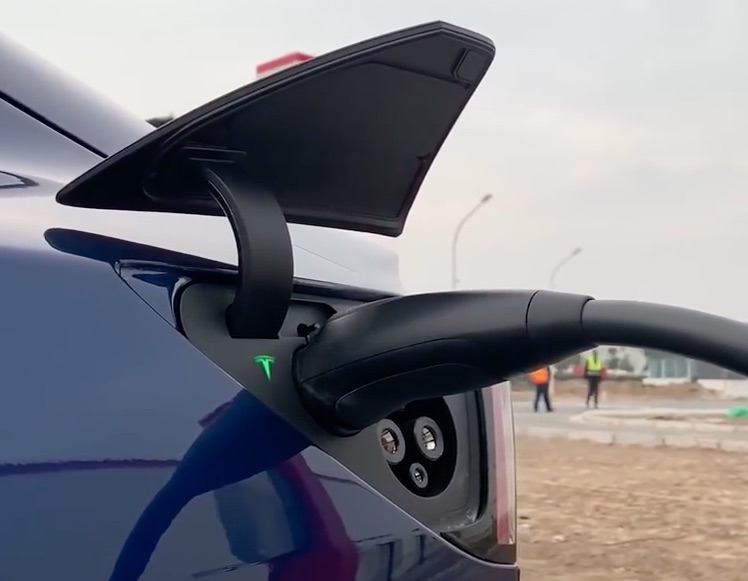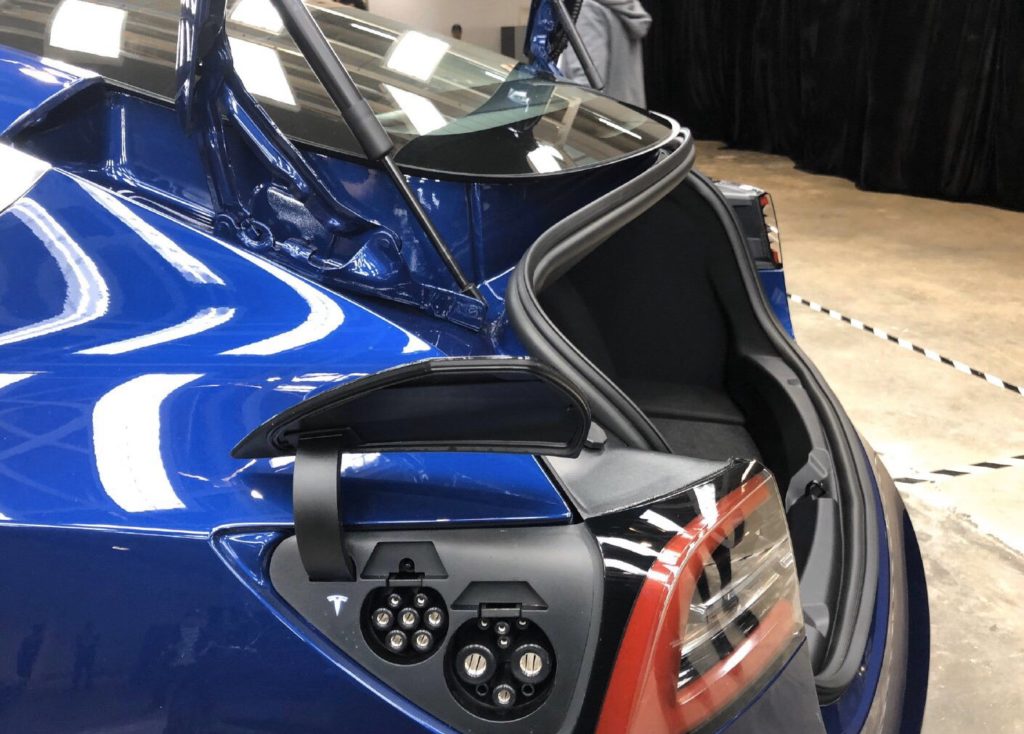In China, Tesla built the Gigafactory 3 in 10 months, which may cause some in the USA to slam policies here about environmental reviews and the like. Be that as it may, the Tesla Model 3 is now manufactured in China, fulfilling a long-term goal of Tesla to have a factory in China. Remember that China is the largest car market in the world, so any car company looking to up-end the automobile industry has to have some presence in China, especially as China is the largest market for “new energy vehicles” (electric vehicles).
Attached at the bottom of this post is a video, in Chinese, with English subtitles, showing the Tesla Model 3. The presenter had imported a USA-made Tesla Model 3, and therefore has some interesting things to say contrasting between the China-made Model 3, and the USA-made Model 3.
Is the appearance of the China-made Tesla Model 3 different? No. The body components etc are all the same between the USA-made and China-made Tesla Model 3.
One significant thing is that the charging port contains both a Tesla charging connector, and a GB/T charging connector. That is two charging ports, and therefore explains why the charging portal on the Model 3 is so large. Tesla knew they’d have to accommodate the two ports in China.

There is an exterior difference that helps one detect the difference between USA-made and China-made Tesla Model 3. On the rear is this badge which is the “Chinese characters representing the sound translation of Tesla”. This badge appears on the left-hand side, and on the right-hand side is a “Model 3” badge. These badges do not appear on the USA-made Tesla Model 3.
Are there any software changes in the China-made Tesla Model 3? No. While imported Tesla Model 3’s have not received the latest version 36 software, the models shown to these journalists did have the latest version. The China-made Model 3’s will receive the same software updates as the “International Version”.
The Autopilot software supports only the basic edition of Auto Pilot. This includes lane-keeping, intelligent speed maintaining, forward collision warning, and other features of basic Tesla Auto Pilot.
How is the build quality? The presenter says build quality is excellent, and is better than the USA-made Tesla Model 3. Remember that he owns an imported USA-made Model 3. It may be true that, as the presenter says, that the superior quality is because Chinese manufacturing skill is better than USA manufacturing skill. Or it may be that Tesla refined the manufacturing and design since the construction of his car and the launching of Tesla’s factory in China.
What about the battery? The only battery size available in China is the “Standard Range Plus“, meaning the long-range Tesla Model 3 is not available in China. As an SR+ car the range is 460km NEDC.
It is not known whether Tesla used a different battery supplier for the China-made cars. In the USA, of course, Tesla works with long-time partner Panasonic. Rumors were that Tesla would use LG Chem, or maybe a Chinese battery maker. The presenter in this video does not know. Just that the battery is still designed and produced by Tesla.
How does the car perform in driving? The presenter says that because it is lighter weight than the Long Range Model 3’s, the performance characteristics are better. It has the same motor as the USA-made Model 3, and is only available as a single motor car (no dual drive as yet). Performance specs are 5.6 seconds 0-100 kp/h (0-60 mi/h), and top speed of 225 km/hr. Dynamic response is about the same, but better because it is a lighter car.
Dual charging ports on China-made Tesla Model 3
At the top we said the China-made Tesla Model 3 arrives with dual charging ports. So far all Tesla cars have had a single charging port. The charging port varied from time to time, but there was always one port. The Gen1 Tesla Roadster had a Roadster-specific charging port. The North America Model S/X and Model 3 use the Supercharger charging port. In Europe, New Zealand, Australia, and some other places, the Tesla Model S and Model X use the IEC Type 2 charging port to support AC charging, 3-phase AC charging, and high speed DC fast charging, and in those same locales the Tesla Model 3 uses a bog-standard IEC Combo 2 port.
But.. from the attached video we see this:

From this angle it’s not entirely clear what’s going on, but there is clearly two charging ports.
On Twitter we found Jay in Shanghai had posted some photos from the same press event. Those photos included this:

A careful look reveals curios things. To the left is what looks like an IEC Type 2 port, but is actually a Chinese GB/T port. In China the GB/T port uses the same physical outline as the IEC Type 2 port, but is gender reversed. In addition, while the IEC supports using this port for single phase AC, three phase AC and even DC charging, China only supports its use for single phase AC.
To the right is another port used for DC charging. While it looks somewhat like a CHAdeMO connector, it is a GB/T DC charging connector and is not at all the same as CHAdeMO.
China and the CHAdeMO Association have announced a partnership![]() to develop an ultra-high speed version of CHAdeMO.
to develop an ultra-high speed version of CHAdeMO.
- Is there enough Grid Capacity for Hydrogen Fuel Cell or Battery Electric cars? - April 23, 2023
- Is Tesla finagling to grab federal NEVI dollars for Supercharger network? - November 15, 2022
- Tesla announces the North American Charging Standard charging connector - November 11, 2022
- Lightning Motorcycles adopts Silicon battery, 5 minute charge time gives 135 miles range - November 9, 2022
- Tesla Autopilot under US Dept of Transportation scrutiny - June 13, 2022
- Spectacular CNG bus fire misrepresented as EV bus fire - April 21, 2022
- Moldova, Ukraine, Georgia, Russia, and the European Energy Crisis - December 21, 2021
- Li-Bridge leading the USA across lithium battery chasm - October 29, 2021
- USA increasing domestic lithium battery research and manufacturing - October 28, 2021
- Electrify America building USA/Canada-wide EV charging network - October 27, 2021















